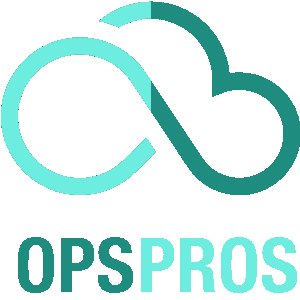What are the key objectives of DevOps? Discover the game-changing principles that will transform your organization into an unstoppable software powerhouse!

Modern software development practices include DevOps, which integrates development and operations.
The DevOps methodology has evolved to bridge the gap between developers and operations.
Let’s dive in.
Key Objective 1: Improve Collaboration and Communication
Key Takeaway: Break down silos between development and operations teams.
A key goal of DevOps is enhancing collaboration and communication between development and operations. Traditionally, these two groups have operated independently. However, this separation often results in misunderstandings and bottlenecks.
Pro Tip: Implement tools like Slack or Microsoft Teams to facilitate better communication.
Example: Team alignment can be achieved by incorporating daily stand-up meetings and joint planning sessions.
Key Objective 2: Increase Deployment Frequency
Key Takeaway: Enable quicker software releases through automation and streamlined processes.
DevOps aims to increase deployment frequency by automating manual processes and standardizing development environments. Organizations can release software updates and new features more quickly, staying competitive.
Pro Tip: Utilize tools like Jenkins, GitLab CI/CD, or CircleCI for continuous integration and deployment.
Example: Increasing reliability and stability can be achieved by automating the testing and deployment pipeline.
Objective 3: Shorten Lead Time
Key Takeaway: Minimize the time between committing and deploying code to production.
A crucial DevOps objective is to shorten the lead time from when code is committed to when it’s deployed to production. Reducing lead time enables organizations to respond more swiftly to market demands and customer feedback.
Pro Tip: Implement infrastructure as code (IaC) using tools like Terraform or Ansible to reduce environment setup time.
Example: Teams can spin up new environments in minutes rather than days with automated environment provisioning and configuration.
Objective 4: Improve Mean Time to Recovery (MTTR)
Key Takeaway: Decrease the time it takes to recover from failures or incidents.
Reducing the mean time to recovery (MTTR) is essential for maintaining high system availability and customer satisfaction. DevOps practices enhance MTTR by promoting faster incident detection and response.
Pro Tip: Use monitoring and alerting tools like Prometheus, Grafana, and PagerDuty to detect and address issues quickly.
Example: MTTR can be improved by establishing a blameless culture that encourages learning from incidents.
Objective 5: Enhance Security and Compliance
Key Takeaway: Integrate security practices into the development and deployment processes.
DevOps aims to boost security and compliance by integrating these considerations into the development and deployment processes. As a result, organizations can reduce security risks and ensure compliance with regulatory requirements.
Pro Tip: Implement security tools like SonarQube, Fortify, or Checkmarx to perform static and dynamic code analysis.
Example: Teams can identify and fix security issues earlier in development by integrating security testing and automated vulnerability scanning.
Objective 6: Foster a Culture of Continuous Improvement
Key Takeaway: Encourage a culture of learning, experimentation, and adaptation.
One of the most critical DevOps objectives is cultivating a continuous improvement culture. Optimizing performance and efficiency means regularly reviewing processes, tools, and practices.
Pro Tip: Hold regular retrospectives and encourage open, constructive feedback from all team members.
Example: Sharing ideas allows teams to identify areas for improvement and continually improve their processes, leading to greater efficiency and effectiveness.
Objective 7: Optimize Resource Management
Key Takeaway: Efficiently manage resources to reduce costs and improve scalability.
Another critical DevOps objective is optimizing resource management. Servers, storage, and networking resources should be allocated efficiently to minimize waste and costs while maximizing performance and scalability.
Pro Tip: Leverage containerization and orchestration tools like Docker and Kubernetes for better resource utilization and easier scaling.
Example: Teams can reduce costs and avoid over- or under-provisioning by implementing auto-scaling policies and monitoring resource usage.
Objective 8: Enhance Customer Experience
Key Takeaway: Focus on user satisfaction by delivering high-quality software and addressing customer feedback.
DevOps practices aim to enhance the customer experience by ensuring that software is reliable, secure, and responsive to user needs. Not only do you develop and deploy high-quality software, but you also solicit and respond to customer feedback.
Pro Tip: Utilize user analytics tools like Google Analytics, Mixpanel, or Hotjar to gather valuable insights on user behavior and preferences.
Example: Monitoring user feedback channels like support tickets, reviews, and social media can identify pain points and prioritize improvements.
Objective 9: Encourage Experimentation and Innovation
Key Takeaway: Foster a supportive environment that allows teams to take calculated risks and innovate.
An often-overlooked DevOps objective is to encourage experimentation and innovation. Senior-level DevOps experts understand the value of creating an environment where team members can test new ideas, learn from failures, and drive innovation.
Pro Tip: Implement feature flagging and canary releases to minimize the impact of experiments on production systems.
Example: Before rolling out new features, development teams can test them on a subset of users, collect feedback, and make improvements.
Objective 10: Measure and Monitor Success
Key Takeaway: Track key performance indicators (KPIs) to ensure effective DevOps practices.
Finally, a crucial DevOps objective is to measure and monitor success. DevOps practices can be assessed by defining and tracking KPIs related to software delivery, operational performance, and business results.
Pro Tip: Establish regular reporting and review processes to keep stakeholders informed and aligned.
Example: KPIs such as deployment frequency, lead time, MTTR, and customer satisfaction can help organizations identify trends and measure progress.
Objective 11: Promote Cross-Functional Skill Development
Key Takeaway: Encourage team members to acquire broader skills and expertise.
DevOps promotes cross-functional skill development to help team members understand the development and operations process. Therefore, team members can make informed decisions and collaborate more effectively.
Pro Tip: Provide training and development opportunities for team members to expand their skill sets.
Example: Teams can foster a collaborative environment by encouraging developers to learn operations skills and operations personnel to learn development skills.
Objective 12: Maintain a Sustainable Work-Life Balance
Key Takeaway: Prevent burnout and promote team well-being by ensuring a healthy work-life balance.
As one of the key objectives of DevOps which is critical yet often overlooked objective is maintaining a sustainable work-life balance for team members. Overworking can lead to burnout, negatively impacting productivity, quality, and employee satisfaction.
Pro Tip: Implement flexible working hours, encourage time off, and avoid unrealistic deadlines or expectations.
Example: Creating a work environment that allows team members to manage their workload can help organizations retain top talent.
Objective 13: Promote a Shared Responsibility Model
Key Takeaway: Encourage team members to take ownership of the entire development and operations lifecycle.
DevOps promotes a shared responsibility model where every team member is accountable for the entire development and operations lifecycle. High-quality, reliable software is delivered through this approach.
Pro Tip: Empower team members with cross-functional training and encourage collaboration across roles.
Example: Team members can better collaborate and solve problems by involving developers in operations tasks, and vice versa.
Objective 14: Implement Value Stream Mapping
Key Takeaway: Analyze the entire software delivery process to identify bottlenecks and areas for improvement.
DevOps veterans with extensive experience recognize the importance of implementing value stream mapping. This process involves analyzing the entire software delivery lifecycle to identify bottlenecks, inefficiencies, and areas for improvement.
Pro Tip: Collaborate with team members from various roles to gather insights and perspectives on the current value stream.
Example: Organizations can improve customer satisfaction by identifying optimization opportunities through value stream mapping.
Objective 15: Balance Speed and Stability
Key Takeaway: Strive to maintain high-quality, stable systems while accelerating development and deployment.
Seasoned DevOps professionals know that balancing speed and stability is one of their most challenging aspects. While increasing the pace of development and deployment is vital, it should not come at the expense of system stability and reliability.
Pro Tip: Regularly assess the impact of DevOps initiatives on system stability by monitoring performance metrics and user feedback.
Example: DevOps teams can deliver high-quality software without compromising system reliability by monitoring system performance and end-user experiences.
Objective 16: Develop Autonomous, Cross-Functional Teams
Key Takeaway: Empower teams with the skills, tools, and authority to make decisions and manage their work independently.
As one of the key objectives of DevOps having highly experienced DevOps leaders understand the value of developing autonomous, cross-functional teams is important. These teams possess the necessary skills, tools, and authority to make decisions and manage their work independently, which leads to increased agility and adaptability.
Pro Tip: Encourage cross-training and knowledge sharing to develop well-rounded, versatile team members.
Example: Cultures of learning and collaboration can create teams capable of tackling complex challenges.
Wrapping up about what are the key objectives of DevOps
The key objectives of DevOps revolve around fostering collaboration, increasing deployment frequency, shortening lead time, improving MTTR, enhancing security and compliance, and cultivating a culture of continuous improvement.
In achieving these objectives, organizations can create high-quality, reliable, and secure software faster.
Use the right tools, create open communication channels, and establish a blameless culture that encourages learning and growth.
James is an esteemed technical author specializing in Operations, DevOps, and computer security. With a master’s degree in Computer Science from CalTech, he possesses a solid educational foundation that fuels his extensive knowledge and expertise. Residing in Austin, Texas, James thrives in the vibrant tech community, utilizing his cozy home office to craft informative and insightful content. His passion for travel takes him to Mexico, a favorite destination where he finds inspiration amidst captivating beauty and rich culture. Accompanying James on his adventures is his faithful companion, Guber, who brings joy and a welcome break from the writing process on long walks.
With a keen eye for detail and a commitment to staying at the forefront of industry trends, James continually expands his knowledge in Operations, DevOps, and security. Through his comprehensive technical publications, he empowers professionals with practical guidance and strategies, equipping them to navigate the complex world of software development and security. James’s academic background, passion for travel, and loyal companionship make him a trusted authority, inspiring confidence in the ever-evolving realm of technology.







